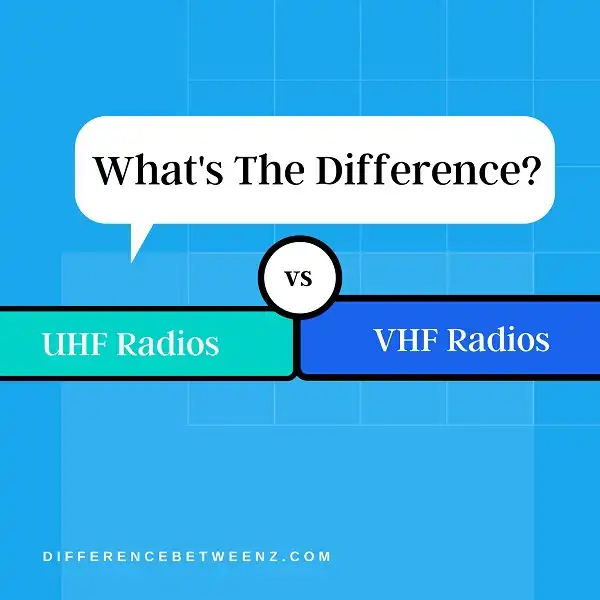Radio frequencies are split into two categories: UHF and VHF. Understanding the difference between these two types of frequencies is important for anyone who wants to use a radio for communication. This blog post will explain the basics of each type of frequency and provide examples of each.
What is UHF Radio?
UHF Radio is a type of radio wave that falls in the UHF spectrum. UHF waves are shorter than VHF waves and have higher frequencies. UHF radio waves are used for many different purposes, including TV and radio broadcasting, two-way radio communication, and radar. UHF radio waves are also used for short-range wireless data transmissions, such as Wi-Fi and Bluetooth. UHF radios are often used in industrial and commercial applications because they can penetrate through walls and other obstacles. UHF radios are also popular among hobbyists because they offer a wide range of frequencies to choose from.
What is VHF Radio?
VHF radio is a type of radiofrequency communication that uses very high-frequency waves to transmit data. VHF radios are commonly used in two-way communication systems, such as walkie-talkies and hand-held radios. VHF radio waves are able to travel farther than UHF waves, making VHF radios ideal for long-range communication. VHF radios are also less likely to be affected by interference from other electronic devices, making them ideal for use in rural areas or other locations where there is little man-made interference. VHF radios are an essential tool for emergency responders and other professionals who need to maintain clear communications over long distances.
Difference between UHF and VHF Radios
UHF and VHF radios are two types of wireless communication devices used in a wide range of applications. UHF refers to radio waves that have a frequency between 300 MHz and 3000 MHz, while VHF refers to radio waves with frequencies between 30 and 300 MHz. UHF radios tend to be more powerful than VHF radios, making them better suited for use in large open spaces or in urban environments where there is a lot of interference from other electronic devices. In contrast, VHF radios are ideal for use in more rural areas, since they can typically penetrate through foliage more easily than UHF signals. Overall, UHF and VHF radios each have their own advantages and disadvantages depending on the application, making them valuable tools for people working in a variety of different sectors.
Conclusion
UHF and VHF radios are two different types of radios that have their own unique benefits. It’s important to understand the difference between the two before making a purchase so you can be sure to get the right radio for your needs.


